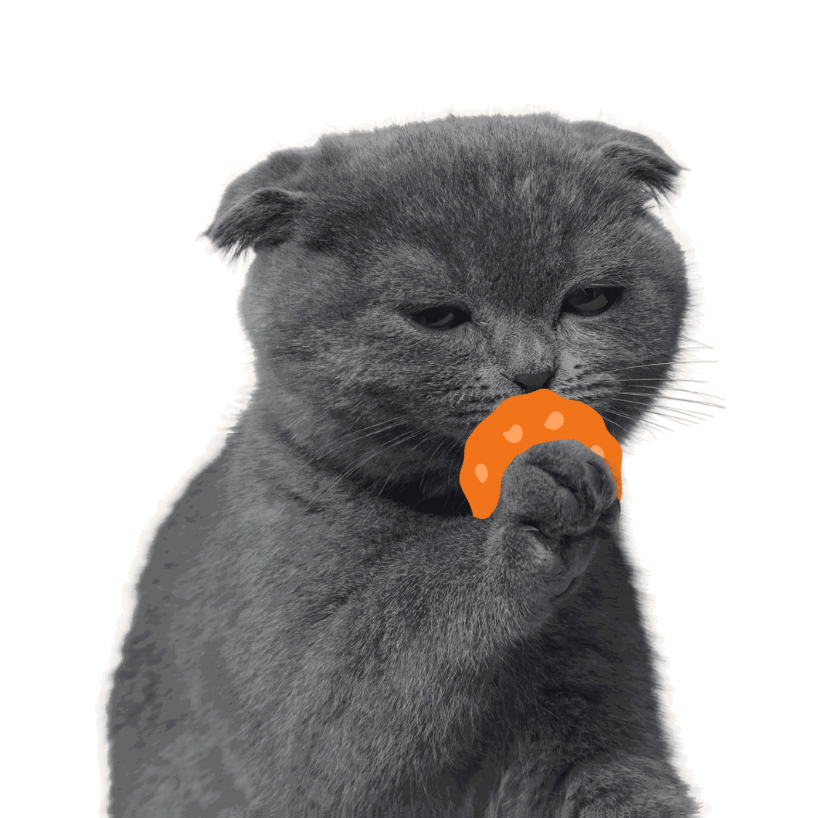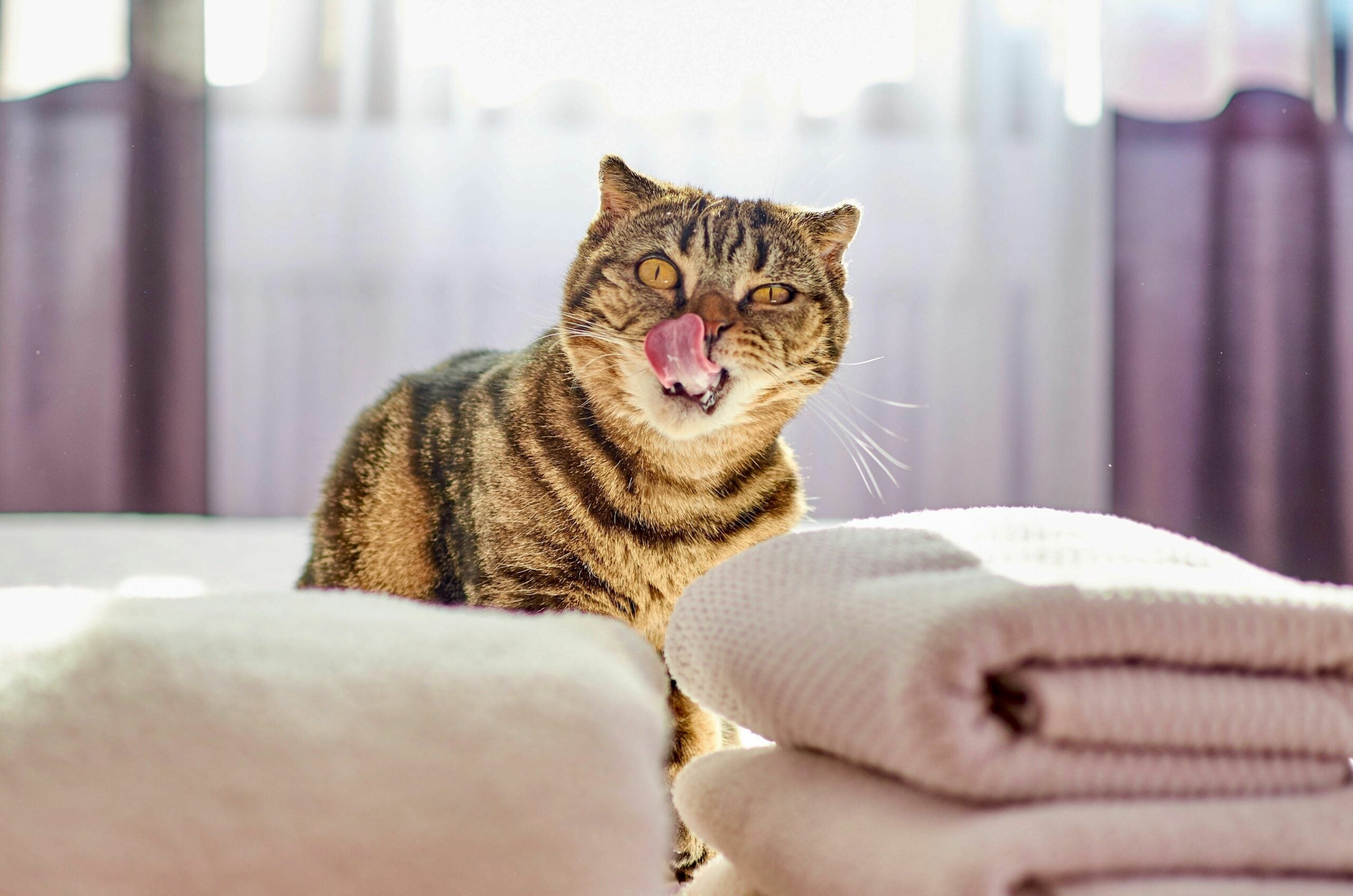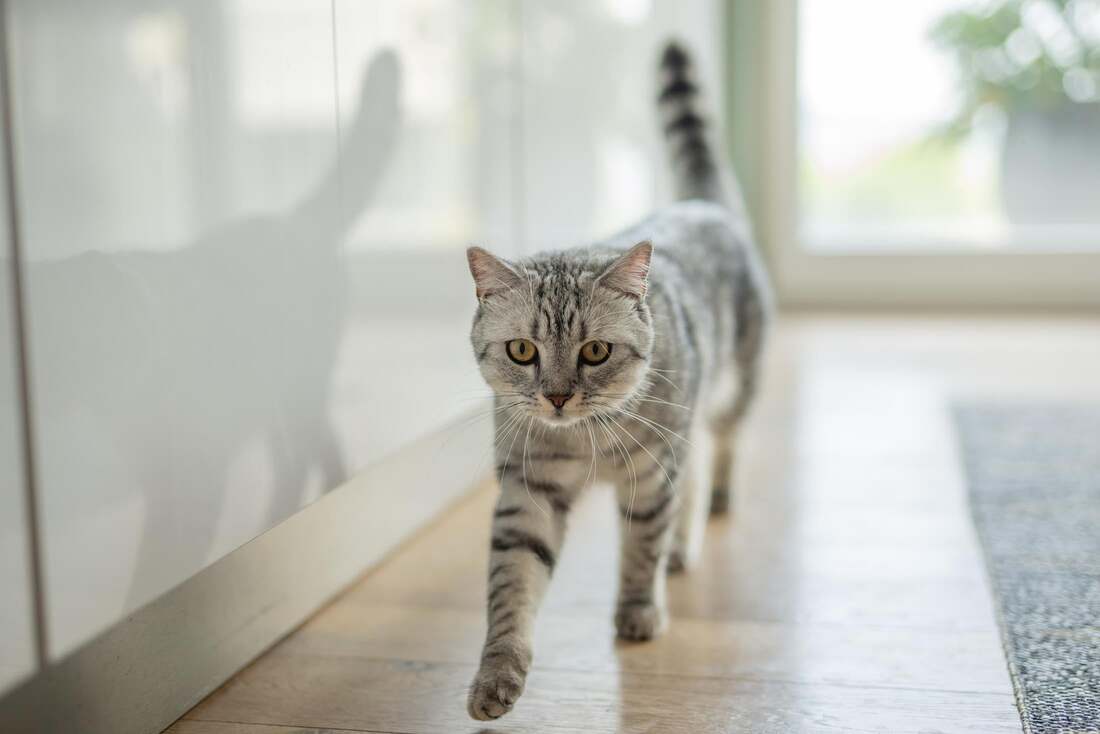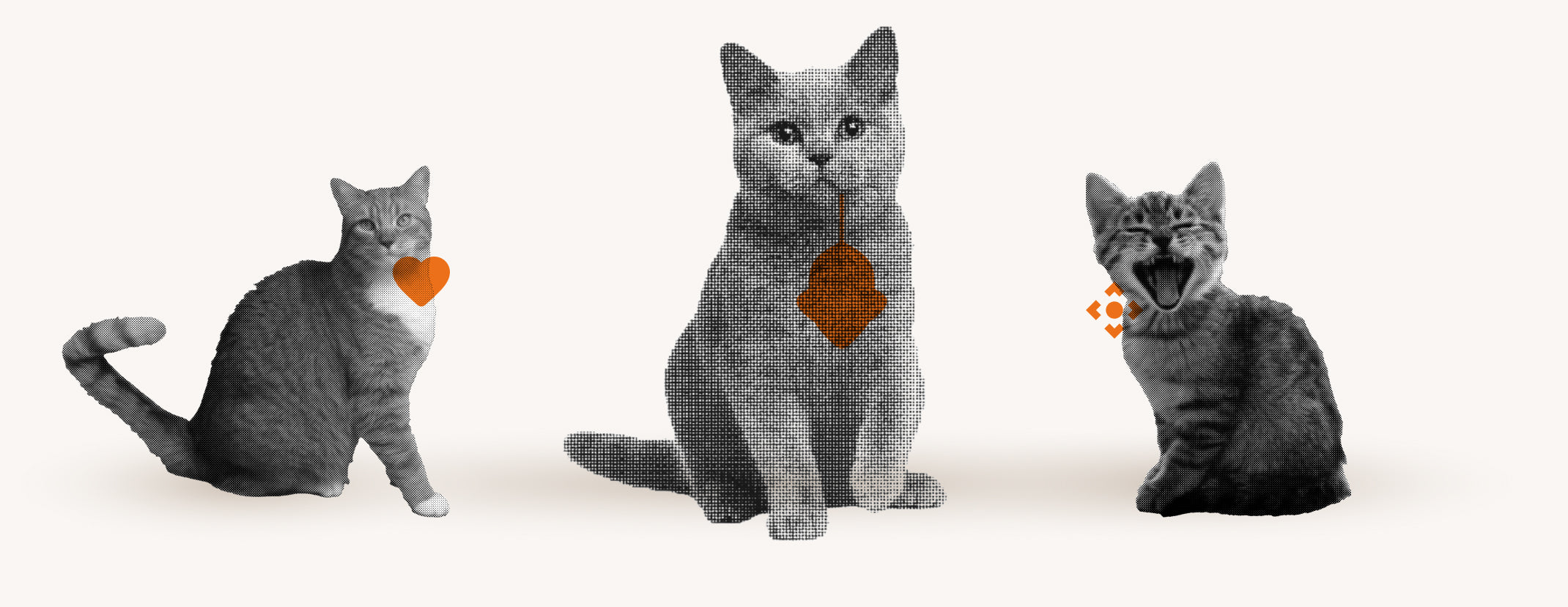Have you ever wondered why your cat just watches while you play instead of joining in?
It can be frustrating to see your pet lose interest in the game or never really participate.
Often it is because the toy is not appealing, the hunting instinct is not awakened, or the playing technique is not stimulating enough.
In this blog post, we will discover different reasons and solutions for this behavior, discuss effective gaming techniques and how to find the right time to play.
Wrong Toy - One Reason Why Your Cat Just Watches
The wrong toy often plays a big role when cats just watch instead of actively playing. Many toys are simply not interesting for cats because they neither appeal to their hunting instinct nor resemble their natural prey. A good toy for cats should be small, flexible and challenging. It should challenge the cat not only physically but also mentally. It is therefore important to choose toys that meet these criteria and encourage the cat to participate.
Make sure the toy is safe and sturdy to avoid injury or swallowing small parts. Here are some tips for choosing the right toy:
- Choose toys that move or make noise to attract your cat's attention.
- Avoid toys that are too big or too heavy, as they can quickly cause the cat to lose interest.
- Prefer toys that encourage the cat to hunt and catch, such as feather fishing rods or small, nimble mice.
Awakening the hunting instinct during the game

To stimulate your cat's hunting instinct during play, it is crucial to make the toy act like a real prey animal. Move the toy in unpredictable patterns that mimic the natural movements of prey, such as short, quick twitches or sudden stops. This creates a realistic hunting experience that stimulates your cat not only physically but also mentally, giving her small sense of achievement when she catches the toy.
Using food as a motivational aid when playing
Food can be an excellent motivator for play, especially if your cat is initially uninterested. Hide small treats in toys or use food puzzles that challenge your cat to work for the food. This not only encourages natural hunting behavior, but also makes play more rewarding. Make sure you choose healthy snacks and subtract them from the daily food allowance to avoid overfeeding.
Effective playing techniques for more fun
To make the game more exciting for your cat, it is important to use different techniques that stimulate their hunting instinct. One effective method is "hide and seek" where you partially hide the toy under blankets or in boxes. This mimics the natural conditions of hunting, where prey is often not fully visible. Cats love to stalk their prey and then attack by surprise. Here are some ideas on how you can play hide and seek:
- Use a blanket or large cloth to partially hide the toy.
- Place the toy in a box or behind a piece of furniture where only part of it is visible.
- Slowly move the toy out of hiding to attract your cat's attention.
Another technique that increases the fun is the "catch game." This involves imitating the movements of the prey by quickly dragging the toy across the ground or throwing it in the air. This promotes your cat's responsiveness and agility. Be sure to change the pace and direction unpredictably to make the game more realistic and challenging. Here are some suggestions on how to make the catch game more exciting:
- Use a fishing rod with feathers or a small stuffed animal on the end to attract your cat's attention.
- Throw the toy in different directions to test your cat's hunting skills.
- Allow the toy to "escape" occasionally to encourage your cat's frustration tolerance and interest.
Playing time: choose the right duration and frequency
The right amount of playtime is crucial for your cat's well-being. It is recommended to organize several short play periods throughout the day , rather than one long one in the evening. This gives your cat the opportunity to release its energy and play needs when it really needs it. For young cats, for example, more frequent and possibly longer play periods are appropriate, as they need to burn off excess energy.
The duration of the game sessions should ideally be between 10 and 15 minutes . Here are some points on how you can make the game time effective:
- Start with a short warm-up phase to get your cat interested.
- Increase the intensity of the game gradually to challenge your cat physically and mentally.
- Allow the game to end slowly to avoid overstimulation and to allow your cat a pleasant rest period.
This structure helps keep play interesting and safe and promotes your cat's health and happiness.
Fear of Gaming: Causes and Solutions
Fear can be a big factor in why a cat is reluctant to play or refuses to play altogether. When a cat is anxious, they often display behaviors such as hiding in corners or under furniture, excessive grooming, or even aggression. These signs can indicate that playing is stressful for them. It is important to understand the causes of fear in order to respond appropriately. Some common triggers include loud noises, unfamiliar people or environments, and bad experiences in the past.
There are several approaches to help an anxious cat feel more comfortable while playing. First, you should create a quiet and safe play environment. Avoid loud noises and make sure there are no unknown people around. Here are a few tips on how you can support your cat:
- Start with short play times and gradually increase them as your cat gains more confidence.
- Use toys that don't cause fear, such as quiet toys or ones that she can control herself.
- Reward each positive behavior with treats or petting to encourage positive associations with play.
These measures can help your cat feel more secure and experience play as a positive and enriching activity.
Recognize pain and adapt playing behavior
If your cat just watches while you play, it could be a sign of pain. Cats are masters at hiding pain, so it's important to watch for subtle signs. These signs include reduced activity, avoiding jumping, or visibly hesitating when moving. If you notice any of these changes, it's a good idea to see a vet to find out and rule out any possible causes.
To adjust your cat's play behavior, choose games that require less physical effort, especially if your cat is in pain. Here are a few ideas:
- Use puzzle games that provide mental stimulation without requiring your cat to do a lot of jumping or running.
- Offer her toys that she can manipulate with her paws instead of chasing them.
- Be sure to move the toy slowly to avoid stress or further pain. These adjustments will help your cat continue to enjoy playing without putting their health at risk.
Lack of interest in playing: Possible causes
Sometimes your cat may not show any interest in playing, and there could be a number of reasons for this. First, you should consider whether there are any health issues that might be causing them discomfort. This could include anything from toothache to joint problems. Age also plays a role; older cats often have less energy and therefore may be less willing to play.
Another reason for a lack of interest in playing can be boredom, especially if the same toys or play routines are used over and over again. Here are a few possible causes:
- Too many toys scattered everywhere can reduce your cat's interest.
- Lack of challenge or stimulation from existing toys.
- Raised fur and other signs of stress or discomfort that indicate that the toy or play style needs to be adjusted.
Finding the right time to play
Choosing the right time to play with your cat can make a big difference. Cats are naturally crepuscular animals, meaning they are most active at dusk. This is usually early in the morning and late in the evening. Playing with your cat at these times will help stimulate their natural hunting instincts. Not only will this encourage physical activity, but it will also make play more interesting and satisfying for them.
There are some simple guidelines you can follow to find the best time to play:
- Observe your cat and find out when he is most active.
- Avoid playtime immediately after feeding, as cats often want to rest after eating.
- Try to keep play times regular so that your cat can develop a stable daily rhythm.
By following these tips, you can ensure that your cat finds play to be an enjoyable and exciting activity.
Discover how Flappie can improve your cat's play behavior
Have you noticed that your cat often just watches instead of playing? Flappie 's smart cat flap can play an important role here. It helps keep the home free of distractions by preventing your cat from bringing home prey. This can positively influence your cat's play behavior as they will be less distracted and more focused on the game.
So why not try Flappie and see how it improves your cat's play behavior? Visit Flappie to find out more and order your smart cat flap. Discover how you can:
- keeping the home clean and free of prey
- motivate your cat better when playing
- promote a more harmonious coexistence
Frequently Asked Questions
Why does my cat never want to play?
There are several reasons why your cat may not be interested in playing. Possible causes could be health issues that are causing them discomfort, such as toothache or joint problems. Your cat's age also plays a role, as older cats often have less energy and therefore are less likely to want to play. Boredom can also be a factor, especially if the same toys or play routines are used over and over again. It is important to vary the toys and techniques regularly to keep your cat interested.
When to stop playing with a cat?
It is recommended that play sessions with your cat last between 10 and 15 minutes. You should slowly wind down the game to avoid overstimulation and to allow your cat a comfortable rest period. Make sure to gradually increase and then decrease the intensity of the game so that your cat is challenged both physically and mentally without being overwhelmed.





Share:
Which cat hunts mice best? A comprehensive guide
Cats chase each other through the apartment - what to do?